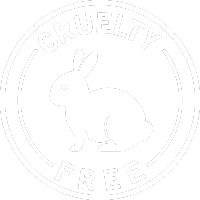Debunking popular beliefs that could be holding your hair back
Haircare is full of advice — from your mother, your hairstylist, your social feed, and the bottle in your shower. But not all advice is created equal. In fact, some of the most commonly repeated haircare “rules” are not only outdated — they can actually damage your hair or limit your results.
Here are the most persistent hair myths you should stop believing — and the science-based truth behind them.
Myth 1: Your Hair Grows Faster If You Trim It Often
Truth: Hair grows from the scalp, not the ends.
Regular trims do not influence how fast your hair grows. What they do is prevent split ends from creeping up the hair shaft and causing breakage, which can make your hair appear to stop growing.
The takeaway: Trim to preserve length, not to speed growth.
Myth 2: You Should Switch Shampoos Often Because Hair Gets “Used To” Products
Truth: Hair is not a living tissue, so it can’t build “tolerance.”
If your go-to shampoo suddenly stops working, chances are it’s due to:
-
Product buildup
-
Changes in hair condition (e.g. dryness, heat damage, seasonal effects)
-
Incorrect product for your current needs
Pro tip: Use a clarifying wash once a month and reassess your routine seasonally — not constantly.
Myth 3: Natural Oils Are Always Better Than Salon Products
Truth: Not always — and sometimes they do more harm than good.
Coconut oil, castor oil, and argan oil can be beneficial — but not for everyone, and not always. Many natural oils can’t penetrate deeply, and some (like castor oil) may clog the scalp if overused.
Professional products like Nutree’s B24 Leave-In Molecular Mask are formulated to deliver actives like peptides into the core of the hair, repairing damage on a structural level — something oils alone cannot do.
Myth 4: You Should Brush Your Hair 100 Strokes a Day
Truth: Overbrushing causes friction, breakage, and frizz.
While gentle brushing can distribute natural oils and detangle, excessive brushing (especially with the wrong tool) leads to mechanical damage — especially on wet or fragile hair.
Best practice: Use a wide-tooth comb or soft-bristle brush only as needed, and always detangle with a leave-in for slip and protection.
Myth 5: Heat Protectant Isn’t Necessary If You Use Low Heat
Truth: Even “low” heat can degrade hair proteins over time.
Blow dryers, curling wands, and even warm straightening brushes create thermal stress. Without a proper heat protectant, that adds up to dryness, breakage, and loss of elasticity.
Solution: Always apply a thermal barrier, especially if your hair is chemically treated or naturally porous.
Myth 6: Hair Botox and Keratin Are the Same Thing
Truth: Not at all.
Keratin treatments chemically smooth the hair, often straightening curls and reducing frizz with heat-activated proteins.
Hair botox, like Nutree’s Bondox Expert, is formaldehyde-free, focuses on deep hydration and structural repair, and preserves your natural texture.
Know the difference — and choose based on your hair’s needs, not marketing.
Myth 7: Air-Drying Is Always Better Than Blow-Drying
Truth: Not necessarily — especially if your hair holds water for too long.
Leaving hair wet for hours keeps the cuticle swollen, making strands more vulnerable to hygral fatigue (a cycle of swelling and shrinking that weakens the hair shaft).
A quick, protected blow-dry on low heat can actually be healthier than long-term dampness — as long as you prep with a nourishing leave-in or repair mask.
Final Thought: Less Noise, More Knowledge
Good hair isn’t about luck — it’s about informed, consistent care. By letting go of myths that no longer serve your strands, you create space for real progress.
So the next time a product doesn’t work, your hair feels dry, or your ends look frayed — pause before blaming your texture or switching routines.
The truth might just be hidden behind an old myth.










